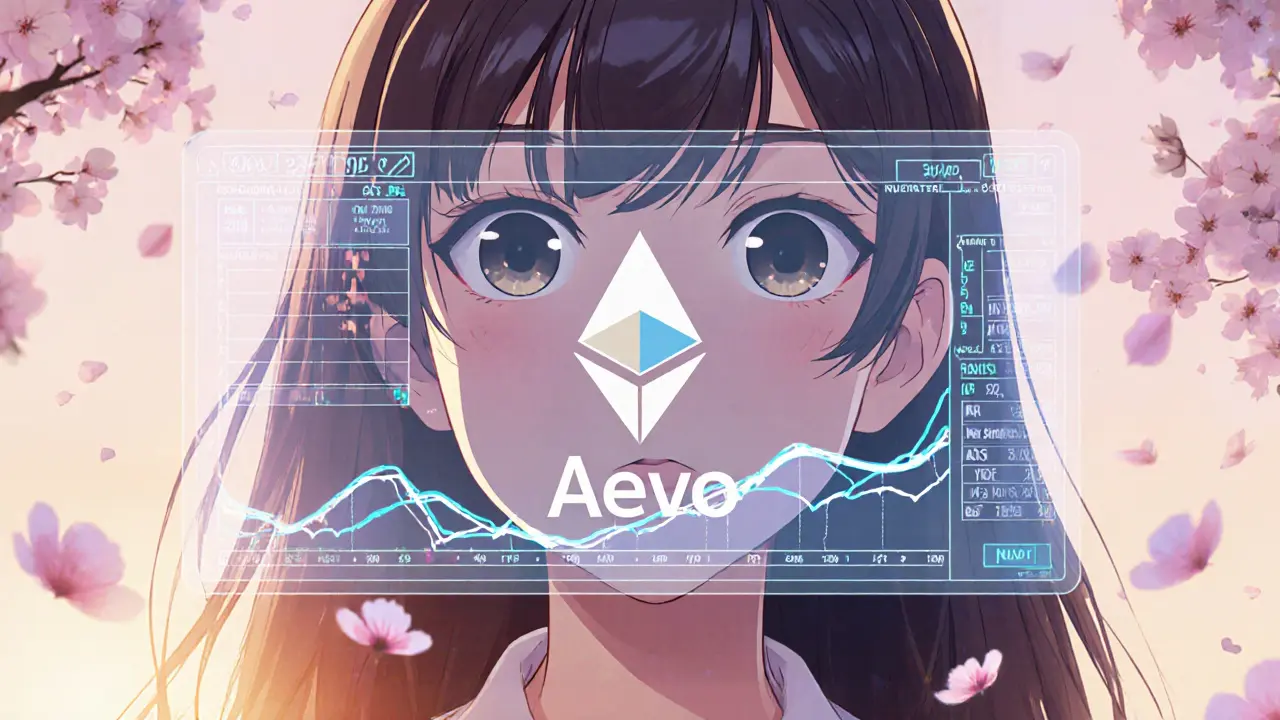FusionX v3 Crypto Exchange Review - Fees, Features & How It Stacks Up

FusionX v3 Fee Comparison Tool
FusionX v3 Fee Structure
Risk Assessment
Comparison with Major DEXs
Supported Tokens
If you’ve been hunting for a DEX that promises truly zero fees, you’ve probably stumbled across FusionX v3 review in a few crypto forums. Launched in 2023 on the Mantle Network, FusionX v3 pitches itself as the fastest, cheapest way to swap tokens without paying the usual taker or maker fees. But does the platform deliver on that hype? Below we break down everything you need to know - from the tech specs and security posture to the limited token lineup and how it compares with more established swaps.
Key Takeaways
- Zero‑fee trading (0.00% taker and maker) is real, but the platform makes up for it with a very narrow selection of 6 coins and 11 pairs.
- Built on the Mantle Network, FusionX v3 benefits from near‑zero gas costs and sub‑second settlement.
- Security guarantees are mentioned but lack public audit reports, leaving a gap for risk‑averse traders.
- Unregulated and with almost no user reviews, the exchange is best suited for early‑adopters comfortable with higher risk.
- When stacked against big DEXs like Uniswap and SushiSwap, FusionX offers cheaper trades but far less liquidity and ecosystem support.
What Is FusionX v3?
FusionX v3 is a decentralized cryptocurrency exchange (DEX) that operates on the Mantle Network. The platform launched in 2023 and quickly positioned itself as the flagship DEX for Mantle, promising ultra‑low slippage, near‑zero gas fees, and a completely permission‑less environment for developers.
The exchange’s permissionless architecture means anyone can list a token or build a dApp on top of FusionX without needing approval from a central authority. This openness aligns with the broader ethos of DeFi, but it also puts the onus on users to verify the legitimacy of each token they trade.
Technical Specs & Fee Structure
FusionX v3’s headline feature is its zero‑fee trading. Both taker and maker fees are set at 0.00%, which is a stark contrast to the 0.1‑0.3% norm on platforms like Uniswap.
Because the exchange runs on Mantle, transaction costs are measured in gas rather than fiat fees. Mantle’s roll‑up design slashes gas to fractions of a cent, effectively making each swap feel “free” to the end user. The platform also advertises ultra‑low slippage, though real‑world slippage depends heavily on the depth of its liquidity pools.
In terms of performance, FusionX v3 processes trades in under two seconds on average, thanks to Mantle’s fast finality. The network’s consensus layer uses a hybrid proof‑of‑stake model that balances security with speed.

Supported Coins and Trading Pairs
As of October 2025, FusionX v3 lists only six native coins and offers eleven trading pairs. The limited selection keeps the UI clean but also caps the platform’s appeal for traders who hunt niche altcoins.
- Core assets: MNTL (Mantle’s native token), FUS (FusionX’s governance token), USDC, ETH, BTC, and a handful of emerging layer‑2 tokens.
- Popular pairs: FUS/USDC, MNTL/FUS, ETH/MNTL, BTC/USDC, and a few cross‑chain combos.
Liquidity depth varies by pair. The flagship FUS/USDC pool currently holds roughly $12million in total value locked (TVL), while more exotic pairs sit under $1million. Low TVL can amplify price impact, especially for high‑volume traders.
Security and Regulatory Landscape
FusionX v3 claims to employ “comprehensive security guarantees,” but public audit reports are scarce. There is no known third‑party audit from firms like CertiK or Quantstamp, which raises a red flag for institutional investors.
The exchange is unregulated, typical for DEXs that operate without a central entity. This means there’s no consumer protection framework you’d find on regulated platforms, and any disputes must be settled on‑chain or through community governance.
Users retain full control of private keys, and the platform does not hold custodial assets. While this self‑custody model enhances security against hacks, it also means lost keys are irrecoverable.
User Experience and Traffic Insights
The official site (fusionx.finance) draws about 1,916 visits per month, 99% of which are organic. A bounce rate of 45% and an average of just over one page per visit suggests that most visitors either find the information they need instantly or leave quickly due to limited content depth.
Onboarding is straightforward: connect a Web3 wallet (MetaMask, Trust Wallet, etc.) and start swapping. The UI is minimalist, with a clean order‑book view and a one‑click swap button. However, the lack of tutorials, FAQs, or community forums makes it harder for newcomers to troubleshoot issues.

How FusionX v3 Stacks Up Against Major DEXs
| Feature | FusionX v3 | Uniswap (v4) | SushiSwap |
|---|---|---|---|
| Network | Mantle (Layer‑2) | Ethereum (L1 & L2) | Ethereum (L1 & L2) |
| Trading Fees | 0.00% taker / 0.00% maker | 0.05% taker / 0.00% maker | 0.30% taker / 0.25% maker |
| Gas Costs | Near‑zero (Mantle) | Variable (Ethereum) | Variable (Ethereum) |
| Supported Tokens | 6 tokens / 11 pairs | Thousands of tokens | Thousands of tokens |
| Total Value Locked (TVL) | ~$30million | ~$12billion | ~$5billion |
| Audit Status | No public audit | Audited by multiple firms | Audited by multiple firms |
In a nutshell, FusionX v3 wins on fees and gas, but loses big on token variety, liquidity, and audit transparency. For traders who primarily move Mantle‑based assets and value cheap swaps, the platform can make sense. For anyone looking for deep liquidity or a broad token lineup, Uniswap or SushiSwap remain the safer bet.
Pros and Cons
- Pros:
- Zero trading fees eliminate cost erosion on high‑frequency trades.
- Sub‑cent gas fees thanks to Mantle’s roll‑up tech.
- Permission‑less environment encourages innovation and token listings.
- Cons:
- Very limited token selection restricts diversification.
- Low TVL leads to higher slippage on larger orders.
- Absence of publicly verified security audits.
- Unregulated status may pose legal risk in certain jurisdictions.
Final Verdict
FusionX v3 shines if you’re already in the Mantle ecosystem and you want to move tokens without paying a fee. Its ultra‑low gas and zero‑fee model are compelling for frequent traders who value cost efficiency over variety. However, the platform’s narrow token list, modest liquidity, and lack of audit documentation make it a higher‑risk option for the average retail investor.
My recommendation: start with a small allocation, test the swap experience, and keep a close eye on community growth. If Mantle gains traction and FusionX expands its pair listings, the zero‑fee advantage could become a major competitive edge. Until then, treat the exchange as a niche tool rather than a primary gateway to the crypto market.
Frequently Asked Questions
Is FusionX v3 really free to trade?
Yes. Both taker and maker fees are set at 0.00%, meaning the platform does not charge a direct fee on each swap. You still pay the underlying network gas, but Mantle’s gas costs are near‑zero.
Do I need to verify my identity to use FusionX v3?
No. As a decentralized exchange, FusionX v3 operates without KYC or AML checks. You only need a compatible Web3 wallet.
How secure is the platform without a public audit?
Security is a mixed bag. Your private keys stay in your wallet, which protects against exchange hacks. However, the smart‑contract code has not been openly audited, so undiscovered bugs could exist. Use caution and limit exposure.
Can I earn yield or provide liquidity on FusionX v3?
The current version focuses on simple swaps. There are no built‑in liquidity mining or yield‑farming programs yet, though developers could create such features via the permission‑less SDK.
Is FusionX v3 regulated in any jurisdiction?
No. The platform operates without any regulatory license, which is typical for DEXs. Users should verify local crypto regulations before trading.







Chloe Jobson
October 10, 2025 AT 16:29FusionX v3's zero fees are insane if you're already deep in Mantle. No more fee erosion on my daily swaps. But yeah, 6 tokens? That's a crypto aquarium, not a pond.
Still, for MNTL/FUS traders, it's the cleanest DEX out there.
Andrew Morgan
October 10, 2025 AT 22:18bro i just connected my wallet and swapped 500 bucks of MNTL for FUS and my gas was like 0.00003 ETH
its not even a transaction its a whisper
why are we still using uniswap like it's 2021
Michael Folorunsho
October 11, 2025 AT 12:41Let me guess - you’re all excited because a tiny L2 DEX with zero audits and less liquidity than my crypto savings account is ‘cheap’.
Real traders don’t chase gimmicks. They chase depth, audits, and ecosystem weight.
FusionX v3 is a glorified beta test with a marketing budget.
If you’re not trading ETH or BTC pairs with >$100M TVL, you’re not trading - you’re speculating in a sandbox.
Roxanne Maxwell
October 11, 2025 AT 19:47I tried it out last week and honestly? Super smooth if you’re just moving between MNTL, USDC, and FUS.
UI is so clean it feels like a luxury.
Just wish there was a little more hand-holding for newbies - no tutorials, no Discord, no nothing. Feels lonely out there.
Hope they add a help section soon!
Jonathan Tanguay
October 12, 2025 AT 10:47People dont get it fusionx v3 is not just a dex its a paradigm shift you think uniswap is good because its been around forever but its built on ethereum which is a bloated overpriced mess with gas fees that make you cry when you check your wallet
mantle is the future and fusionx is the first real dexe on it that actually delivers on its promises zero fees zero gas essentially zero friction
and yes i know there are no audits but every major protocol started with no audits and look at uniswap now
youre just scared of innovation because you dont understand the tech and you rely on audit reports like theyre holy scripture when the real security is in the code and the community and right now the community is growing fast
also the tvl is low because no one knows about it yet but once the mantle ecosystem explodes fusionx will be the go to and youll be kicking yourself for not getting in early
stop being a sheep and start thinking for yourself
Ayanda Ndoni
October 12, 2025 AT 17:32yo i just wanna know if this thing works on my phone
my trust wallet keeps saying 'unsupported network' and i dont wanna relearn everything again
can someone just tell me if i can use it without deleting my whole wallet
thanks bros
Elliott Algarin
October 13, 2025 AT 02:25It's fascinating how we treat zero fees like a moral victory when really it's just an economic trade-off.
They're not giving away anything - they're betting on volume, ecosystem lock-in, and future token appreciation.
It’s not free. It’s deferred.
And if Mantle doesn’t grow, FusionX becomes a museum piece.
But if it does? This could be the quiet revolution we didn’t see coming.
John Murphy
October 13, 2025 AT 10:47Anyone else notice how the FUS/USDC pool has like 12M TVL but the MNTL/BTC pair is under 300k?
That’s a slippage trap waiting to happen
and the UI doesn’t even warn you
just click swap and hope
kinda wild
Zach Crandall
October 14, 2025 AT 07:27While the technical architecture of FusionX v3 is commendable from a computational efficiency standpoint, the absence of regulatory compliance and third-party security verification renders it an unsuitable vehicle for any serious capital allocation.
One cannot optimize for transaction cost without considering systemic risk.
Furthermore, the limited token selection suggests a lack of strategic vision beyond short-term hype.
One must ask: Is convenience worth existential vulnerability?
Akinyemi Akindele Winner
October 14, 2025 AT 17:59Zero fees? Pfft. This ain't innovation, this is crypto’s version of selling ice to penguins - you’re giving away the cold and charging for the freezer.
Mantle’s a ghost town with a fancy name and FusionX is the guy yelling 'FREE BEER!' in an empty bar.
But hey, if you wanna be the first to lose your ETH to a smart contract bug, go ahead - I’ll be over here laughing at the memes when it all goes kaboom.